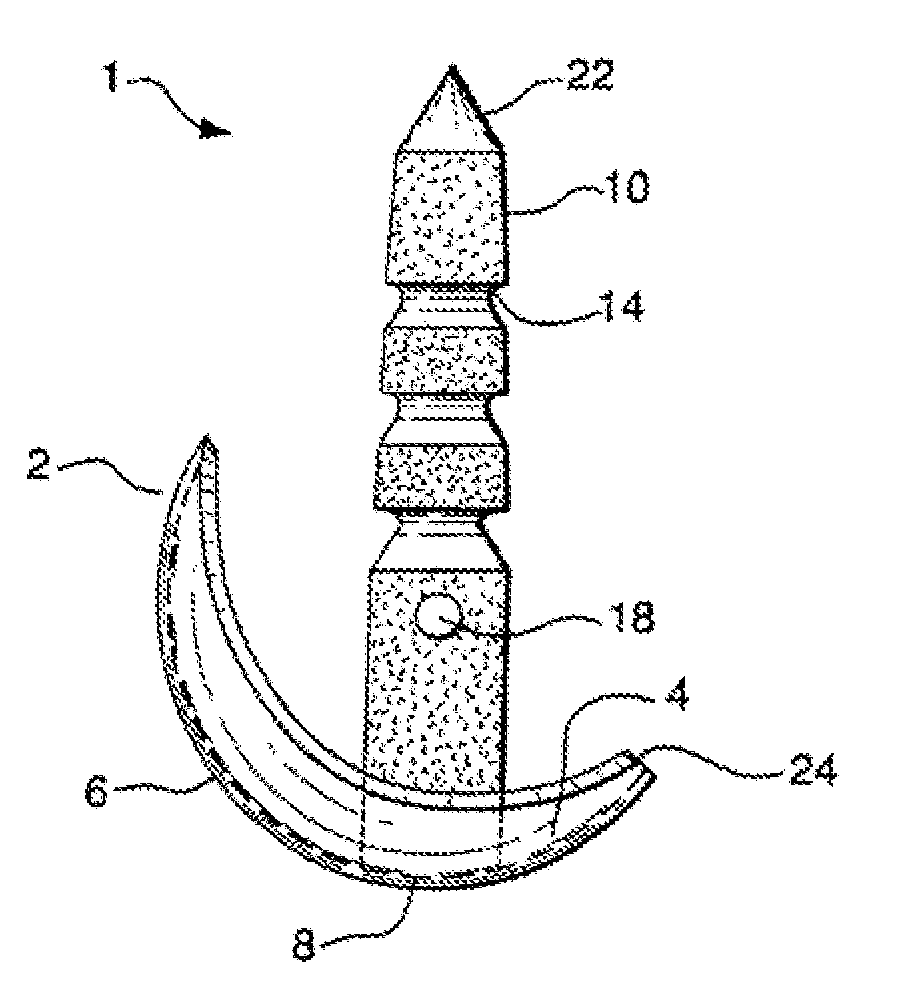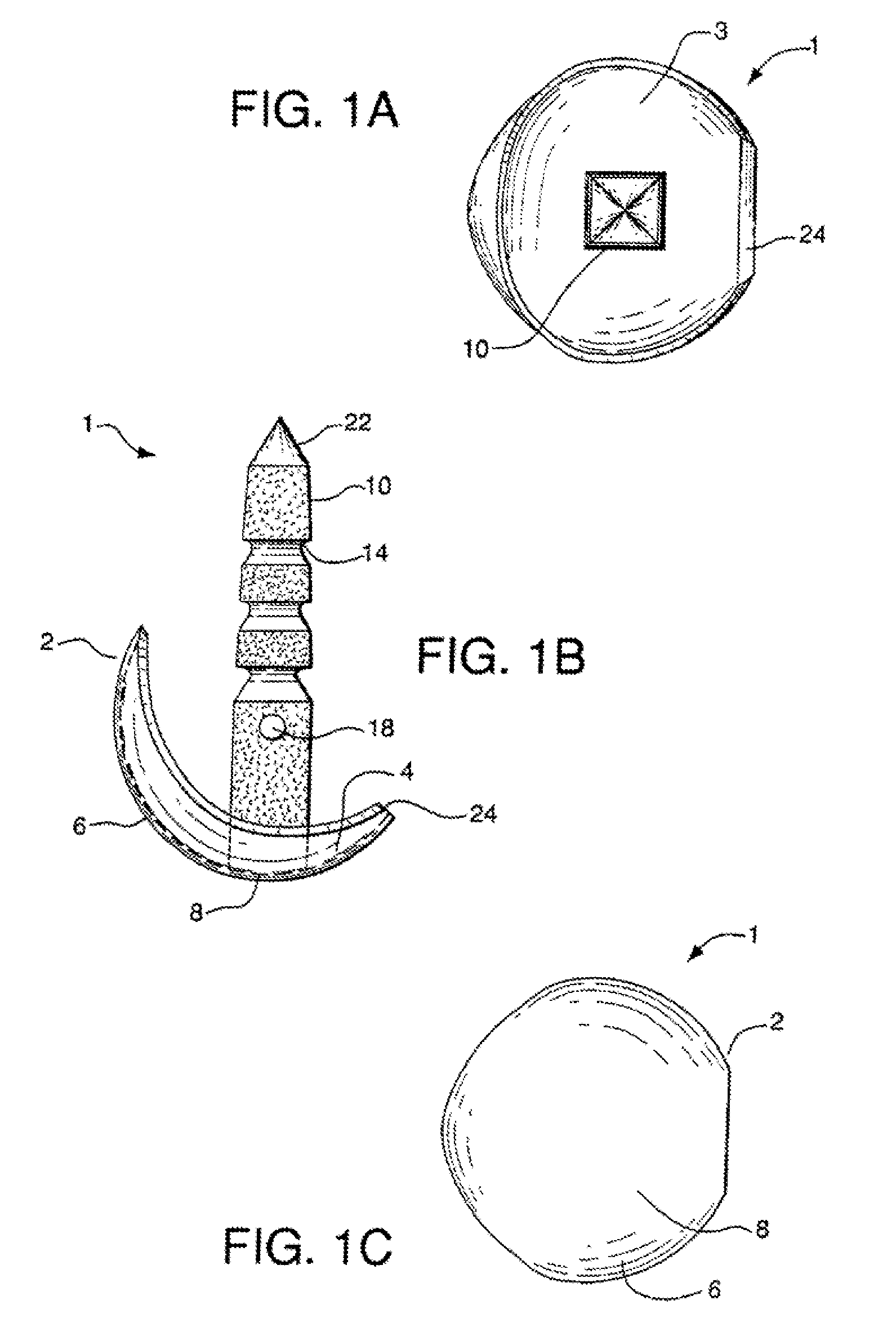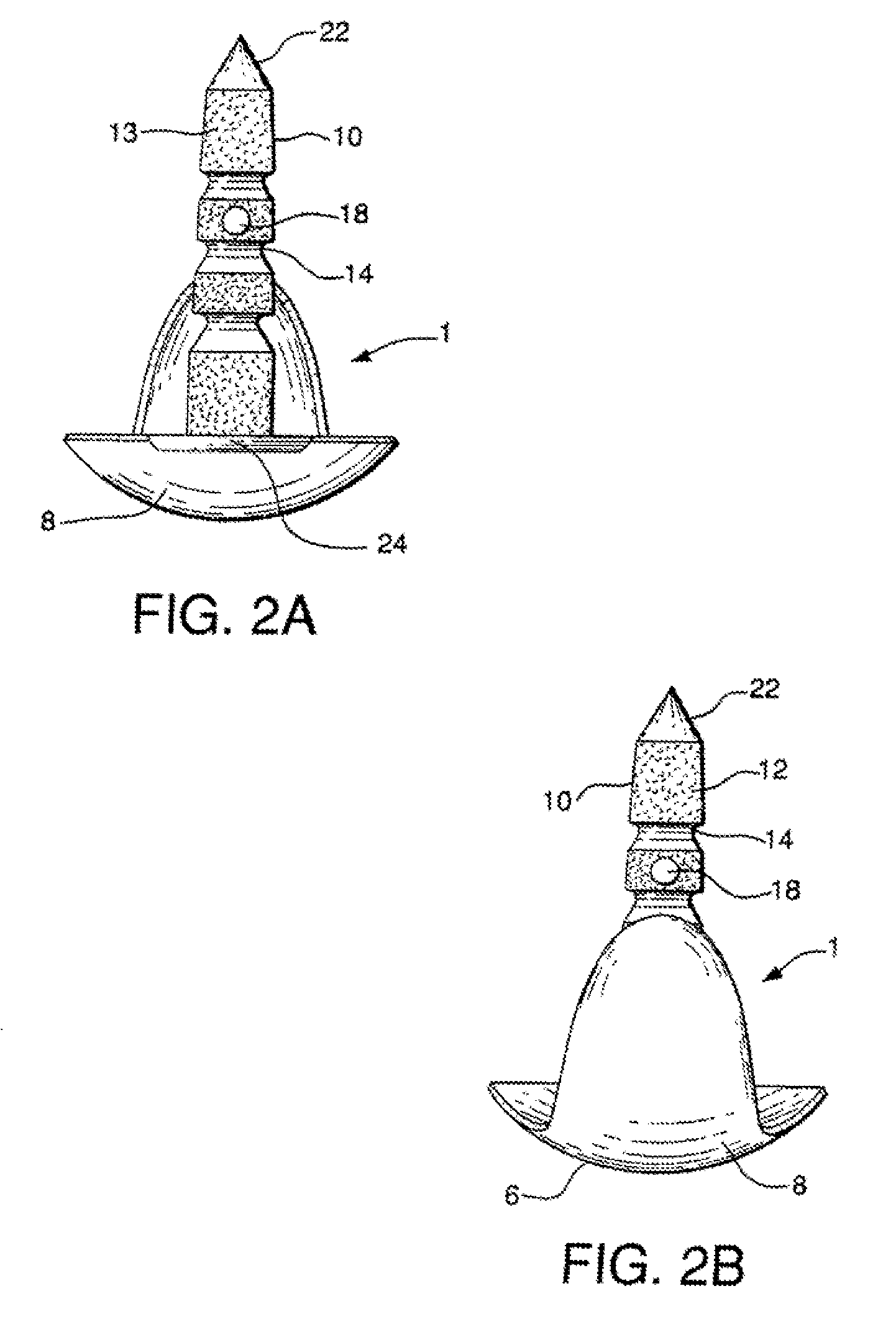Metatarsal implant
a metatarsal and implant technology, applied in the field of metatarsal implants, can solve the problems of ineffective prior methods at preventing slippage of implants, extreme failure of component joints replacing the base of the proximal phalanx as well as the head of the metatarsal, and failure of the vast majority of efforts to achieve the effect of preserving the health and integrity of existing sesamoid bones, stimulating or facilitating bone ingrowth through the stem
- Summary
- Abstract
- Description
- Claims
- Application Information
AI Technical Summary
Benefits of technology
Problems solved by technology
Method used
Image
Examples
Embodiment Construction
[0023] Referring to FIGS. 1-4, a metatarsal implant 1 has a head 2 that on the posterior side 3, defines a concave surface 4. The concave surface 4 is generally spherically shaped, having degrees of concavity that substantially conform to the shape of the distal joint end of a metatarsal bone, either naturally occurring or sculpted. Preferably, the degrees of concavity substantially conform to the shape of the distal joint end of the first metatarsal bone.
[0024] The joint end of a metatarsal bone may also be shaped into a standard form that conforms to the concave surface 4 of the implant. Such shaping may be necessary when the defect or disease of the metatarsal bone distorts the bone from the natural shape of the joint end of healthy metatarsal bone. Such shaping may be accomplished using a bone shaping tool such as a reamer and techniques generally known in the art.
[0025] The anterior face 6 defines a convex surface 8. The convex surface 8 is generally spherically shaped, havin...
PUM
 Login to View More
Login to View More Abstract
Description
Claims
Application Information
 Login to View More
Login to View More - R&D
- Intellectual Property
- Life Sciences
- Materials
- Tech Scout
- Unparalleled Data Quality
- Higher Quality Content
- 60% Fewer Hallucinations
Browse by: Latest US Patents, China's latest patents, Technical Efficacy Thesaurus, Application Domain, Technology Topic, Popular Technical Reports.
© 2025 PatSnap. All rights reserved.Legal|Privacy policy|Modern Slavery Act Transparency Statement|Sitemap|About US| Contact US: help@patsnap.com



